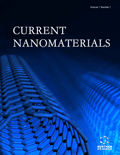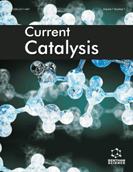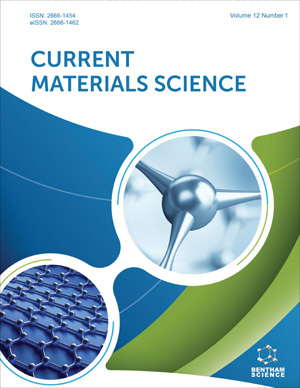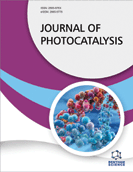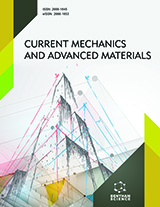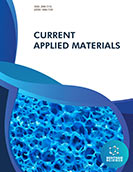Abstract
Background: Since last two decades, there has been rigorous efforts are going on to develop a hydrogen storage system for large-scale application in fuel cells, mobiles and for automotive uses. The early experimental data on hydrogen storage using CNTs contradicted theoretical calculations, and there has been a large variation in the CNT hydrogen storage capacity reported by various research groups. In present work, a comparative study on hydrogen storage and release characteristics of bare as well as three transition metals viz. Ni, Cu & Fe nanoparticles decorated MWCNT at ambient temperature i.e. 298K and pressure range of 9-16 atm has been studied.
Methods: Synthesis, characterization and hydrogen adsorption-desorption behavior of bare as well as transition metal (Ni, Cu and Fe) decorated multiwalled carbon nanotubes has been studied systematically.
Results: The maximum hydrogen storage capacities of finely dispersed Ni, Cu, and agglomerated Fe decorated and bare multiwalled carbon nanotubes measured at 298K were 0.812 wt% (at 15.85 atm), 2.59 wt% (at 12.64 atm), 0.909 wt % (at 15.45atm) and 0.654 wt% (at 12.84 atm) respectively. A mechanism invoking metal nanoparticle mediated dissociation of hydrogen molecule and its subsequent storage in carbon structure as well as defect sites has been proposed to explain hydrogen storage and release behavior of metal-decorated multiwalled carbon nanotubes.
Conclusion: The nature and morphology of metal nanoparticle has significant role in controlling hydrogen adsorption-desorption characteristic of decorated multiwalled carbon nanotubes.
Keywords: MWCNT, decorated MWCNT, adsorption, hydrogen storage, CNTs, s–p–d hybridization.
Graphical Abstract
Current Nanomaterials
Title:Tuning of Hydrogen Storage Property of Multi-walled Carbon Nanotube by Decorating Ni, Cu and Fe Nanoparticles
Volume: 1 Issue: 2
Author(s): Jyoti Prakash, B.M. Tripathi, Kinshuk Dasgupta, J.K. Chakravartty, M.R. Pai, Asheesh Kumar and S. R. Bharadwaj
Affiliation:
Keywords: MWCNT, decorated MWCNT, adsorption, hydrogen storage, CNTs, s–p–d hybridization.
Abstract: Background: Since last two decades, there has been rigorous efforts are going on to develop a hydrogen storage system for large-scale application in fuel cells, mobiles and for automotive uses. The early experimental data on hydrogen storage using CNTs contradicted theoretical calculations, and there has been a large variation in the CNT hydrogen storage capacity reported by various research groups. In present work, a comparative study on hydrogen storage and release characteristics of bare as well as three transition metals viz. Ni, Cu & Fe nanoparticles decorated MWCNT at ambient temperature i.e. 298K and pressure range of 9-16 atm has been studied.
Methods: Synthesis, characterization and hydrogen adsorption-desorption behavior of bare as well as transition metal (Ni, Cu and Fe) decorated multiwalled carbon nanotubes has been studied systematically.
Results: The maximum hydrogen storage capacities of finely dispersed Ni, Cu, and agglomerated Fe decorated and bare multiwalled carbon nanotubes measured at 298K were 0.812 wt% (at 15.85 atm), 2.59 wt% (at 12.64 atm), 0.909 wt % (at 15.45atm) and 0.654 wt% (at 12.84 atm) respectively. A mechanism invoking metal nanoparticle mediated dissociation of hydrogen molecule and its subsequent storage in carbon structure as well as defect sites has been proposed to explain hydrogen storage and release behavior of metal-decorated multiwalled carbon nanotubes.
Conclusion: The nature and morphology of metal nanoparticle has significant role in controlling hydrogen adsorption-desorption characteristic of decorated multiwalled carbon nanotubes.
Export Options
About this article
Cite this article as:
Prakash Jyoti, Tripathi B.M., Dasgupta Kinshuk, Chakravartty J.K., Pai M.R., Kumar Asheesh and Bharadwaj S. R., Tuning of Hydrogen Storage Property of Multi-walled Carbon Nanotube by Decorating Ni, Cu and Fe Nanoparticles, Current Nanomaterials 2016; 1 (2) . https://dx.doi.org/10.2174/2405461501666160808164652
| DOI https://dx.doi.org/10.2174/2405461501666160808164652 |
Print ISSN 2405-4615 |
| Publisher Name Bentham Science Publisher |
Online ISSN 2405-4623 |
 19
19 3
3 1
1
- Author Guidelines
- Bentham Author Support Services (BASS)
- Graphical Abstracts
- Fabricating and Stating False Information
- Research Misconduct
- Post Publication Discussions and Corrections
- Publishing Ethics and Rectitude
- Increase Visibility of Your Article
- Archiving Policies
- Peer Review Workflow
- Order Your Article Before Print
- Promote Your Article
- Manuscript Transfer Facility
- Editorial Policies
- Allegations from Whistleblowers


